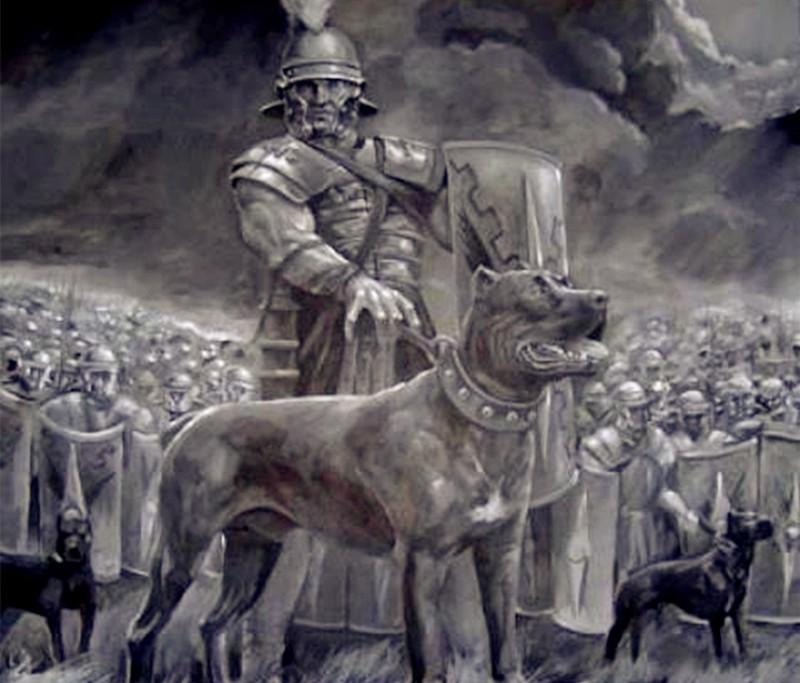In Shakespeare's famous book Caesar, there is a line: "Give the order to slaughter, release the dogs of war!" ”
What is a "Dog of War"? This was actually Caesar's special unit, and the soldiers in it were not people, but dogs, also known as "war dogs".

In ancient times, Egyptians, Greeks, Persians, Alans, Slavs, Carthaginians, Britons, and Romans have recorded the use of war dogs on battlefields.
The earliest record of the use of war dogs comes from the war between the Lydian Empire and the Simirians around 600 BC. In 525 BC, cambyses II of the Persian Achaemenid dynasty made an expedition to Egypt at the Battle of Perusia, and also used the "Animal Warfare Regiment" to have not only war dogs but also war elephants. At the Battle of Marathon in 490 BC, the dog also followed his Greek armor against the Persians. In 480 BC, Persia Xerxes I invaded Greece with indian hounds and huge chartered carriages. Of course, there are too many records of war dogs to list them here.
Among the breeds of war dogs, the "Molosus Hound" is considered to be the most combat-friendly and fierce, but unfortunately, the Molosus Hound is extinct, and it is said to be a very large dog breed, similar to the Tibetan mastiff as we know it today.
The Morosus Hound was used as a fighting dog in the arena, but was later introduced into the army and trained to become a member of the Special Forces.
Above the battlefield, the dogs were at the forefront of the battle formation, the slaves in the second column, the soldiers in the third column, and the cavalry at the end. After the war, the war dogs took the lead in attacking in order to break the enemy's phalanx of long guns, knowing that the war dogs can also play a deterrent role, which brings psychological fear to the enemy. Then the slave will follow, of course, the slave's role is mainly to send to death, and then the infantry will follow, and the cavalry will charge again.
In addition to the Romans, the Carthaginians were also very good at using war dogs for combat. One morning in 217 B.C., 25,000 Roman troops pursuing Hannibal entered the valley of the Pass of Lake Simeno, and the thick fog obscured everything, making it impossible to see even a dozen steps away. Little did the Roman warriors know that a fierce battle was about to break out. The war horse was the first to sense the danger and hissed uneasily.
Suddenly, behind the thick fog came a soul-stirring barking sound, like a thousand male lions and evil tigers roaring in unison. Soon, the entire valley was shrouded in an atmosphere of extreme terror.
Immediately after that, a series of fierce dogs clad in armor and as vicious as evil ghosts rushed out of the fog and rushed towards the Roman cavalry like sharp arrows. These military dogs are tall, fierce, agile, and specialize in biting the most vulnerable part of the war horse's body - the nose.
The Roman army was fooled by the sudden attack and the position was in disarray. Hannibal took the opportunity to command the Carthaginian army to attack on all sides and annihilated the Roman legion in one fell swoop.